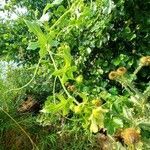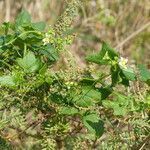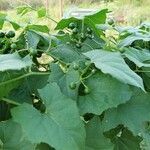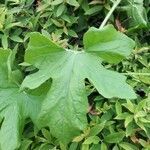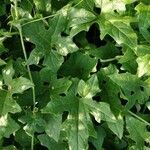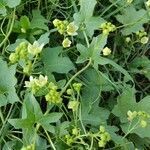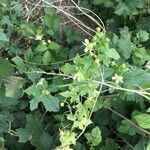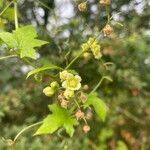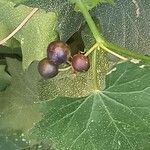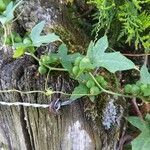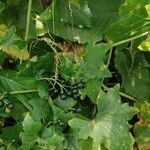A pumpkin family plant. It is a vine that keeps growing from year to year. It grows 2 m high and spreads 2 m wide. The rootstock is large and fleshy. The stem is weak and climbing. It has prickly spiral tendrils. These are opposite the leaves. The leaves are rough and have 5 leaflets like fingers on a hand. They are heart shaped. The flowers are green, white or yellow. They are small and of one sex. They are in the axils of leaves. The fruit are small, round berries.
